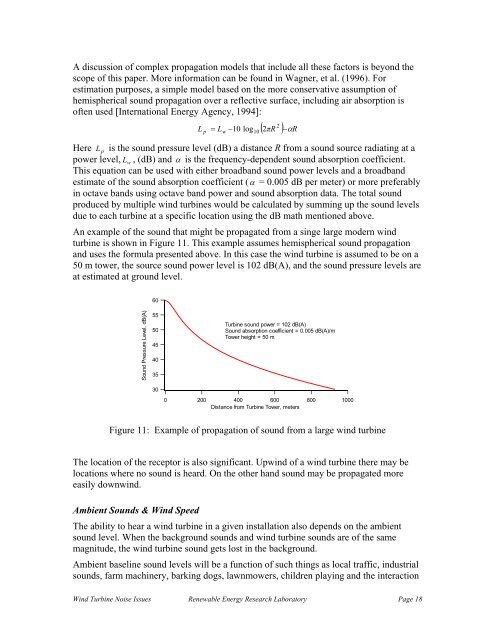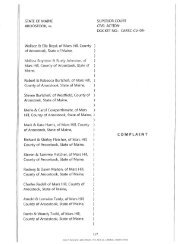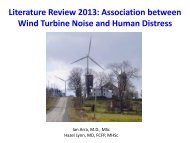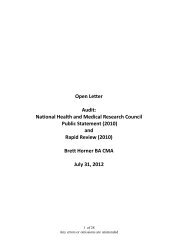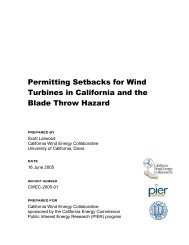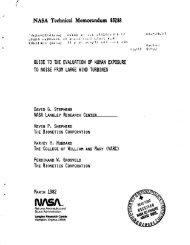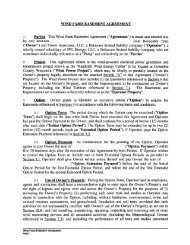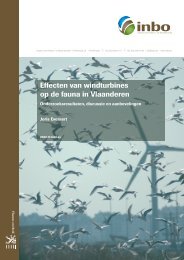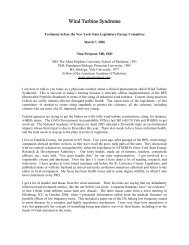Noise White Paper Outline - Minuteman Wind, LLC
Noise White Paper Outline - Minuteman Wind, LLC
Noise White Paper Outline - Minuteman Wind, LLC
Create successful ePaper yourself
Turn your PDF publications into a flip-book with our unique Google optimized e-Paper software.
A discussion of complex propagation models that include all these factors is beyond thescope of this paper. More information can be found in Wagner, et al. (1996). Forestimation purposes, a simple model based on the more conservative assumption ofhemispherical sound propagation over a reflective surface, including air absorption isoften used [International Energy Agency, 1994]:Lp= Lw− 10 log 10 22( πR ) −αRHere Lp is the sound pressure level (dB) a distance R from a sound source radiating at apower level, Lw , (dB) and α is the frequency-dependent sound absorption coefficient.This equation can be used with either broadband sound power levels and a broadbandestimate of the sound absorption coefficient (α = 0.005 dB per meter) or more preferablyin octave bands using octave band power and sound absorption data. The total soundproduced by multiple wind turbines would be calculated by summing up the sound levelsdue to each turbine at a specific location using the dB math mentioned above.An example of the sound that might be propagated from a singe large modern windturbine is shown in Figure 11. This example assumes hemispherical sound propagationand uses the formula presented above. In this case the wind turbine is assumed to be on a50 m tower, the source sound power level is 102 dB(A), and the sound pressure levels areat estimated at ground level.60Sound Pressure Level, dB(A)555045403530Turbine sound power = 102 dB(A)Sound absorption coefficient = 0.005 dB(A)/mTower height = 50 m0200400 600Distance from Turbine Tower, meters8001000Figure 11: Example of propagation of sound from a large wind turbineThe location of the receptor is also significant. Upwind of a wind turbine there may belocations where no sound is heard. On the other hand sound may be propagated moreeasily downwind.Ambient Sounds & <strong>Wind</strong> SpeedThe ability to hear a wind turbine in a given installation also depends on the ambientsound level. When the background sounds and wind turbine sounds are of the samemagnitude, the wind turbine sound gets lost in the background.Ambient baseline sound levels will be a function of such things as local traffic, industrialsounds, farm machinery, barking dogs, lawnmowers, children playing and the interaction<strong>Wind</strong> Turbine <strong>Noise</strong> Issues Renewable Energy Research Laboratory Page 18


